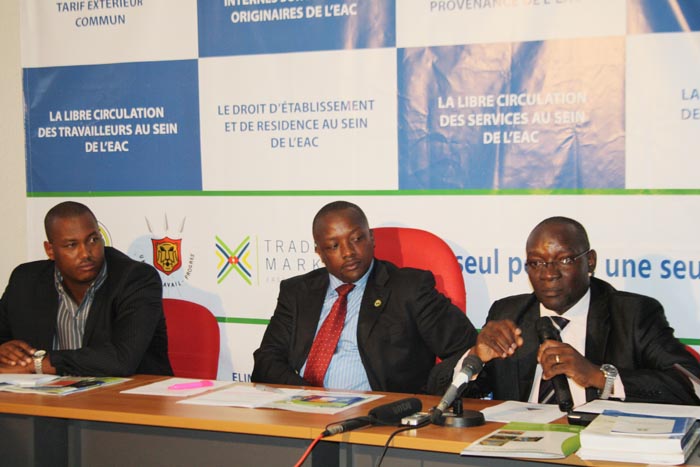This 30th October 2013, a press conference has been held, in the Ministry in Charge of East African Community Affairs, to inform Burundians about the achievements and challenges Burundi should overcome for an effective EAC customs union implementation. –By Lorraine-Josiane Manishatse
Since 1st July 2009 when Burundi has joined the EAC customs union protocol, important progress has already been made even though there are still some challenges. “Single post border offices have been created, non-tariff barriers have been eliminated (though there are some which are to be abolished), the Common External Tariffs in the community have been adopted and implemented, ICT( Information Communication Technology) Customs reform systems have been put in place … Negotiations on the single territory customs system are in progress but its feasibility encounters some challenges which should be identified in time,” indicates Pierre Claver Rurakamvye, the Managing Director for infrastructure and Economic Affairs in the Ministry in charge of Burundi integration in East African Community. He points out that Customs Union consists of creating a regional economic block characterized by a free movement of goods. Thanks to that Customs union, the population, entrepreneurs, investors benefit more.
“There has been a reduction of customs duty; consequently, the number f trucks which transport goods from EAC countries have now increased because they no longer spend a long time on the way. Goods from EAC countries are abundant on Burundi markets,” he states.
For him, the main objective of the customs union is to facilitate trade and stimulate EAC partners States’ citizens to boost their trade.
According to Léonce Niyonzima, the Director of Program and Monitoring in the Department of Customs and Excise at “OBR”, EAC partner States have agreed on the same taxation thanks to the customs union. “Taxes have been reduced to 0% for raw material and capital good products, to 10% for intermediate goods and 25% for finished products. But for sinsitive products the taxation rates vary from 35 to 60% according to their origin” he says. He adds that there are products whose taxes are high to protect and boost local products.




















 IWACU Open Data
IWACU Open Data

